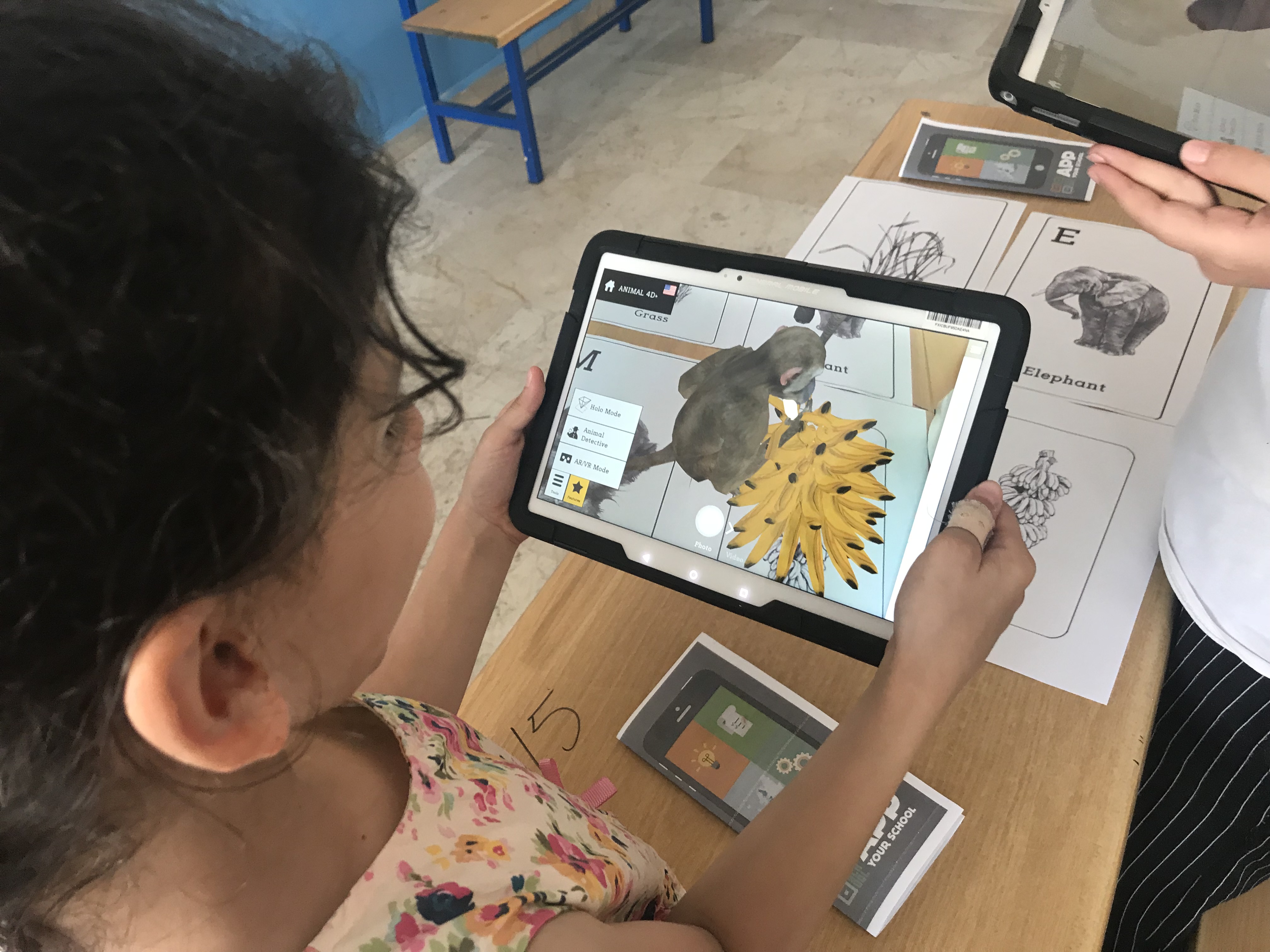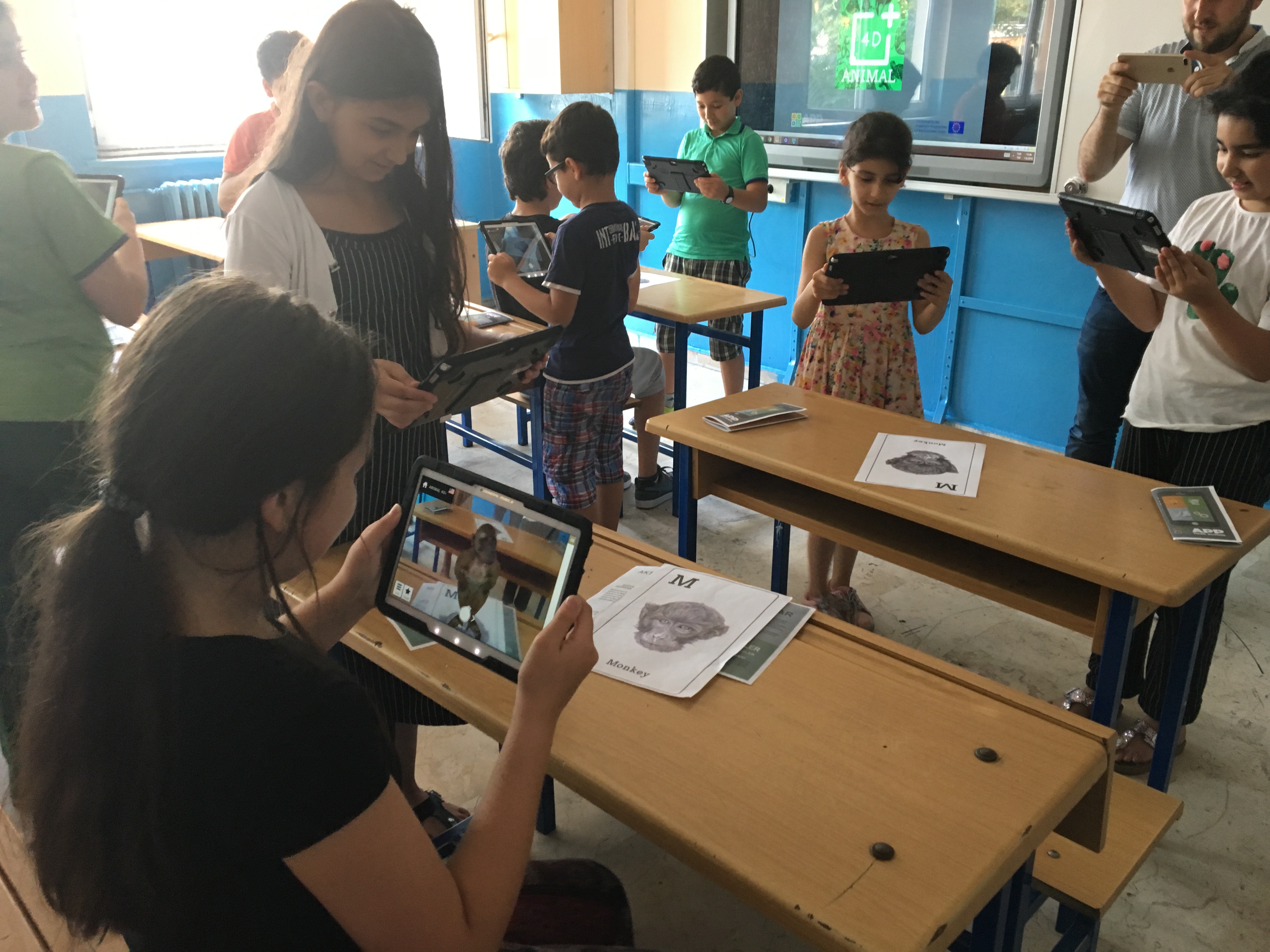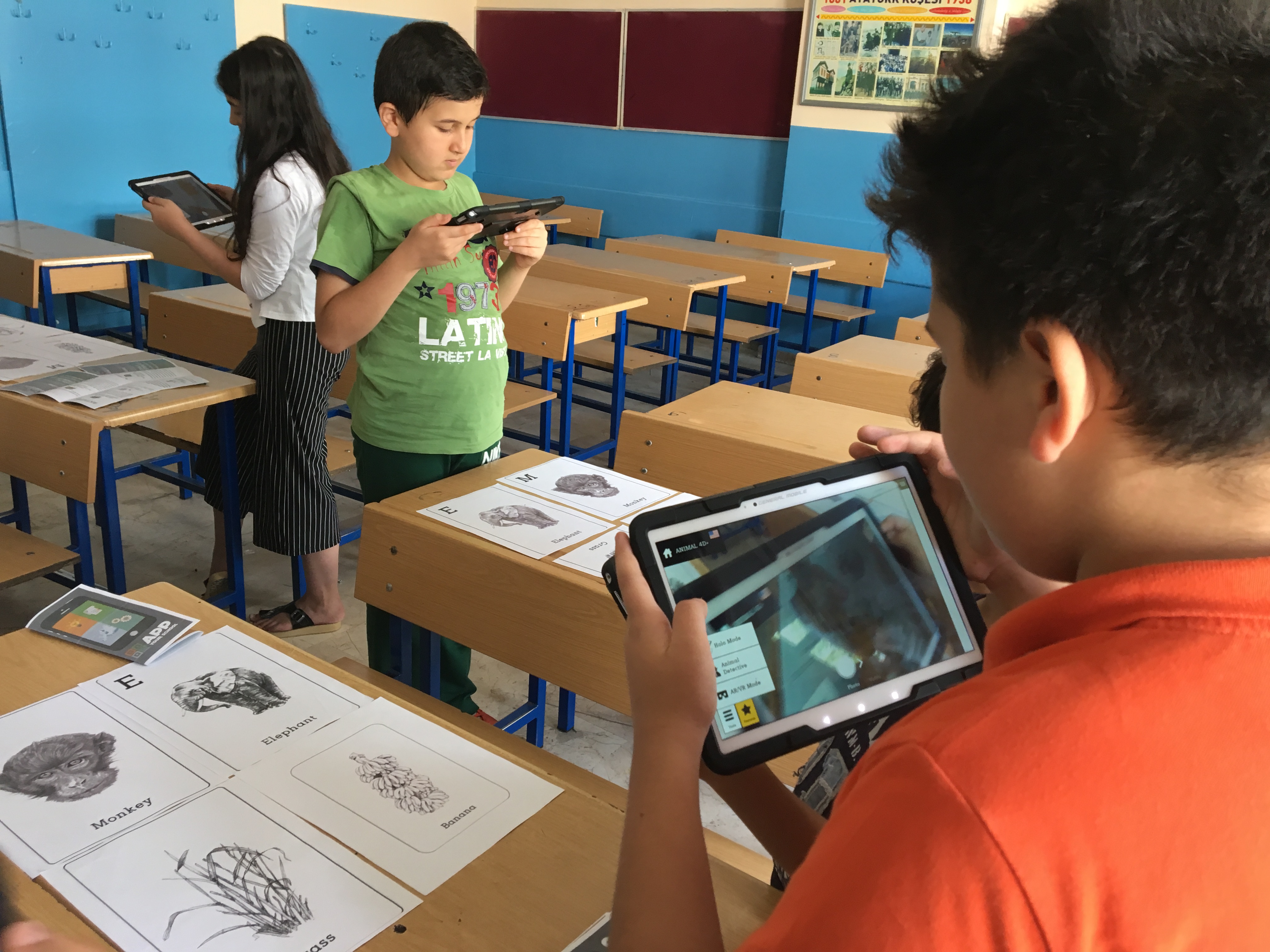Animals’ sound
Organising institution: Esenler District Education Authority
Country: Turkey
Age: 11-12 years old
Key question: How can we teach animals and their sounds?
Objectives:
- Teaching animals,
- Teaching animals’ sounds,
- Teaching applications which are related to animals.
Time: 3 hours
Software and apps to be used:
- Animal 4D APP,
- Tablet
Brief presentation: Students will print out animal cards from the web page of the application. And they will download the application and than scan the animal cards via applicaiton. In this way they will be able to recognise the sounds of the animals.
Topics covered:
To teach English and Biology.
Civic engagement: Students can go to city Zoo and they can see how the animals make sound and they can compare their sounds with the sounds from the application. When they hear the sound of the animals they will be able to say their names.
Preparation of space for the Atelier: Tablets for each A classroom designed for group work. Each group will have their own tablets.
Materials needed:
- Tablets,
- printouts,
- flashcards,
- application,
- internet connection.
Main inspirations taken from personal research:
English, Biology and ICT. Ss will be able to learn new English vocabularies, habitats of animals and their food habits. Lastly, they will be familiar with using technology.
Mass media and social media connections: While they are experiencing the application, they will take the photos of animals and themselves and also make a video in which they are imitating the sounds of animals. Then, they will share them on social media.
How do you plan to give voice to students to present or show their personal skills and knowledge? Students will work in groups. Each group will analyze a different group of animals. They will make a competition among their shared experiences via voting them.
How do you collect information as the starting point of a Digital Atelier? Teacher prepare a skill chart. Each students will write their own skills and they will stick on the chart.
Introducing students to the key question - the research begings: Which animals do you know and how do they look like?
Experimental phase
- Action that unfolds the practical activity to clarify the question (experimental phase): Via using application, students are going to learn the name of animals and their appearance.
- Active work of the students: a. They will search the application on its website. b. They will download the application and print out the animals cards which belong to their group. c. They will scan the animals to see their names and appearances.
- Presentation of findings and results (visualisation of information): After the students scan the animals with the help of application and see them in 3D way , they will take scrrenshots of them and then they will show and ask their names to each other.
- Analysis of results: The instructor observes the action and gives feedback whether they tell the name correctly or not.
Project/design phase - part 1
- Second action that unfolds the practical activity (project/design phase): How do the animals make sound? Teacher brings some authentic materials such as a bird, a mouse, a cat etc. to make them hear the real sound of the animals.
- Active work of the students: Each group will choose one of them as a leader. The leader will scan the animal again to make his friends listen its sound and they will try to guess which animal it is.
- Presentation of findings and results (visualisation of information): They will imitate the animals’ sound they have learnt.
- Analysis of results: The instructor observes the action and gives feedback whether they imitate the sound correctly or not.

How do you plan to evaluate knowledge and skills?The process of DA will give instructor many information about students’ skills and knowledge. In addition, instructor will use Kahoot to assess students’ performance.
Conclusion:Students cannot find the possibility to learn in real life because of the some reasons. Lots of subjects contains danger, experiencing some subjects are expensive in education. The artificial reality gives facility to students to experience all of the subjects easily.
The publication was created as part of the project: APP YOUR SCHOOL.
This publication reflects the views only of the author, and the Commission cannot be held responsible for any use which may be made of the information contained therein.



